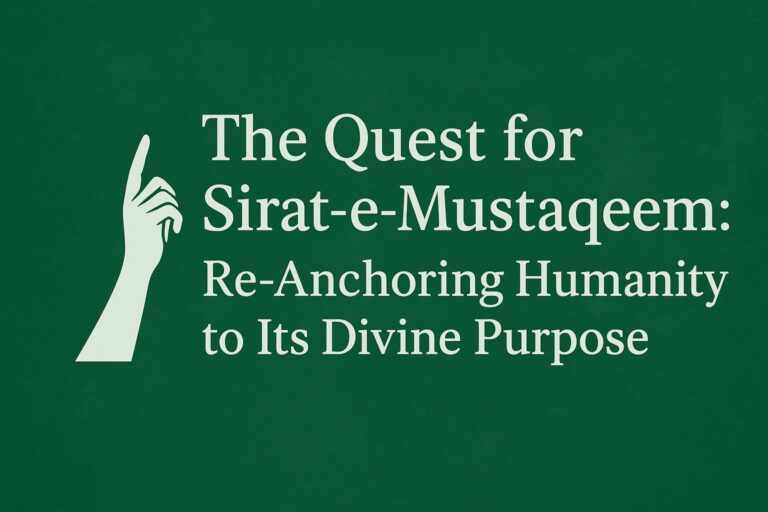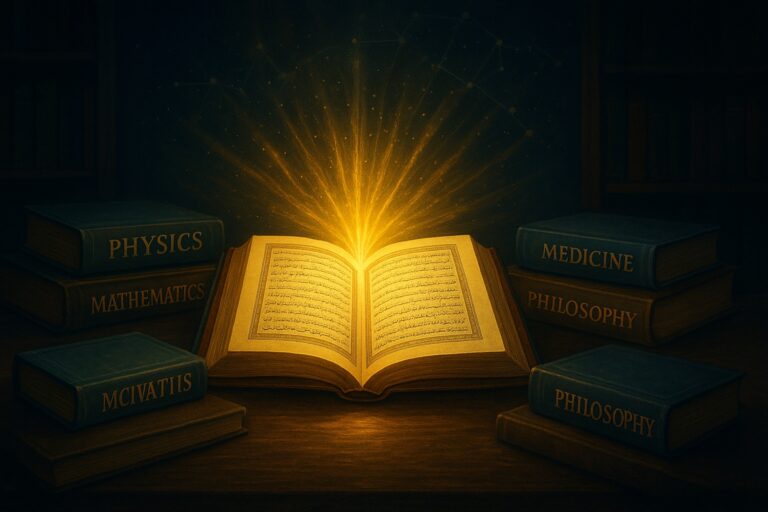Human Creation: Fascinating Quranic Facts Revealed Over 1400 Years Ago
https://mrpo.pk/proving-the-unprovable/
The Quran provides profound insights into the stages of human creation and development, emphasising the significance of both parents in nurturing and raising children. Let’s explore this remarkable journey:
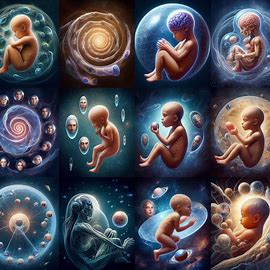
Human Creation from Clay:
-
- The Quran states that humans were created from an extract of clay 1. This initial stage represents our physical origin and connection to the Earth.
- It highlights the divine craftsmanship involved in shaping our bodies.
- Embryonic Development:
- The Quran describes the stages of embryonic development with remarkable accuracy.
- First, the fertilised egg becomes an “alaqah” (meaning leech, suspended thing, or blood clot). This term aptly captures the appearance of the early embryo 1.
- The embryo derives nourishment from the mother’s blood, akin to how a leech feeds on blood 1.
- Next, the alaqah transforms into a “mudghah” (chewed substance), resembling a partially formed lump 1.
- These stages align with modern scientific understanding of embryogenesis.
- Parental Roles:
- Mothers play a pivotal role during pregnancy, nurturing the developing life within their wombs.
- Fathers also contribute through their genetic material, shaping the child’s physical traits.
- The Quran acknowledges both parents’ efforts and emphasises their joint responsibility.
- Childbirth and Upbringing:
- After nine months of gestation, the mother delivers the child—a miraculous process.
- Breastfeeding follows, providing essential nourishment and emotional bonding.
- Parents are entrusted with the upbringing of their children, teaching them values, knowledge, and love.
- The Quran recognizes their sacrifices and the profound impact they have on their children’s lives.
- Highest Ranks:
- The Quran elevates the status of parents, particularly mothers.
- Prophet Muhammad (peace be upon him) emphasized that paradise lies at the feet of mothers, highlighting their immense honor 2.
- Fathers, too, hold a significant position, guiding and protecting their children.
In summary, the Quran beautifully portrays the intricate journey from conception to upbringing, emphasising the joint efforts of parents and the divine wisdom behind this process. 12
The Quran Delves into Various Aspects of Human Life, Offering Guidance, Wisdom, and Reflections. Some Key Themes:
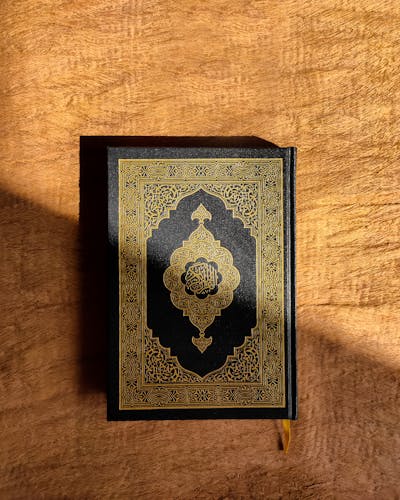
- Spirituality and Worship:
- The Quran emphasises monotheism (Tawheed) and the worship of Allah (God).
- It provides detailed instructions on prayer (Salat), fasting (Sawm), charity (Zakat), and pilgrimage (Hajj).
- Morality and Ethics:
- The Quran outlines moral principles, including honesty, kindness, justice, and compassion.
- It encourages forgiveness, patience, and gratitude.
- Social Justice:
- The Quran advocates for fairness, equality, and caring for the less fortunate.
- It condemns oppression, corruption, and exploitation.
- Family and Relationships:
- The Quran discusses marriage, family bonds, and the rights and responsibilities of spouses, parents, and children.
- It emphasises love, respect, and maintaining family ties.
- Science and Nature:
- While not a scientific textbook, the Quran references natural phenomena, celestial bodies, and the balance in creation.
- It invites reflection on the signs of Allah in the universe.
- Life After Death:
- The Quran describes the concept of the Hereafter (Akhirah), accountability, and the Day of Judgment.
- It motivates believers to do good deeds and seek eternal reward.
- Stories of Prophets:
- The Quran narrates stories of prophets like Adam, Noah, Abraham, Moses, and Jesus.
- These stories offer lessons in faith, resilience, and perseverance.
Remember that the Quran is multifaceted, addressing both spiritual and practical aspects of human existence. Its verses inspire contemplation, self-improvement, and a deeper connection with the Divine.
A Beautiful Verse From the Quran, Emphasises the Unity and Diversity of Humanity:
“O mankind, indeed We have created you from male and female and made you peoples and tribes that you may know one another. Indeed, the noblest of you in the sight of Allah is the most righteous of you. Indeed, Allah is Knowing and Acquainted.” (Quran, Surah Al-Hujurat, 49:13)
This verse highlights that our differences—whether of ethnicity, language, or culture—are meant to foster understanding and mutual respect. The true measure of nobility lies in piety and good deeds.
The Quran and Hadith Provide Insights into the Inception of Humans. Relevant verses:
- Human Creation from Clay:
- Allah says in the Quran: “Verily We created man from a product of wet earth; then placed him as a drop (of seed) in a safe lodging; then We fashioned the drop into a clot, then We fashioned the clot into a little lump, then We fashioned the little lump into bones, then clothed the bones with flesh, and then produced it another creation. So blessed be Allah, the Best of Creators!” 1.
- This verse describes the sequential stages of human development, from clay to the final creation.
- Human Creation from Dust and Sperm:
- Another verse states: “It is He Who has created you from dust then from a sperm-drop, then from a leech-like clot; then does He get you out (into the light) as a child: then lets you (grow and) reach your age of full strength; then lets you become old…” 1.
- This verse emphasises the origin of humans from dust and the miraculous process of growth.
- The Breath of Life:
- Allah says: “Then He fashioned him in due proportion and breathed into him the soul (created by Allah for that person), and He gave you hearing, sight, and hearts. Little is the thanks you give!” (Quran, Surah As-Sajdah, 32:9)
- This verse highlights the divine act of breathing life into the human form, endowing us with consciousness and senses.
- The Balanced Creation:
- “And indeed We have created man, and We know what his self whispers to him. And We are nearer to him than his jugular vein.” (Quran, Surah Qaf, 50:16)
- This verse emphasises Allah’s intimate knowledge of our innermost thoughts and emotions.
- The Purpose of Human Creation:
- “Did you think that We had created you in play (without any purpose), and that you would not be brought back to Us?” (Quran, Surah Al-Muminun, 23:115)
- It reminds us of our ultimate return to Allah and the purpose behind our existence.
- The Stages of Human Creation Reiterated:
- “He creates you in the wombs of your mothers, creation after creation, in three veils of darkness.” (Quran, Surah Az-Zumar, 39:6)
- This verse reiterates the gradual development within the womb.
- The Miraculous Formation:
- “We created man from an extract of clay. Then We made him a drop in a place of settlement, firmly fixed. Then We made the drop into an alaqah (leech-like clot), then We made the alaqah into a mudghah (chewed substance), then We made the mudghah into bones, then We clothed the bones with flesh, and then We caused him to grow into another creation.” (Quran, Surah Al-Muminun, 23:12-14)
- These verses provide a detailed account of human development.
- Hadith on Human Creation:
- Prophet Muhammad رسول اللہ صلی اللہ علیہ وسلم (peace be upon him) taught us that humans are created from a mixture of male and female sexual discharge 2.
- The Hadith highlights the intricate process of conception and the divine plan behind our existence.
In summary, the Quran and Hadith beautifully depict the stages of human creation, emphasising Allah’s wisdom and design. 12
Scientists Approach the Quranic Descriptions of Embryonic Development with a Mix of Curiosity, Respect, and Scientific Inquiry. While the Quran Provides Insights into Human Development, it is not a Scientific Textbook. Here’s How Scientists Generally View It:
- Historical Context:
- Scientists recognise that the Quran was revealed over 1,400 years ago, in a pre-scientific era.
- The descriptions in the Quran reflect the understanding of that time, using metaphors and language accessible to the audience.
- Accuracy and Symbolism:
- Some scientists appreciate the remarkable accuracy of certain Quranic descriptions, such as the stages of embryogenesis.
- Others view these descriptions as symbolic or allegorical, emphasising spiritual truths rather than precise biological details.
- Complementarity, Not Conflict:
- Many scientists see no inherent conflict between faith and science.
- They believe that religious texts and scientific discoveries can complement each other, offering different perspectives on reality.
- Scientific Inquiry:
- Scientists explore embryonic development through empirical research, using tools like microscopy, genetics, and imaging.
- They seek natural explanations for biological processes while respecting religious beliefs.
- Open Dialogue:
- Some scientists engage in interfaith dialogues, discussing the intersection of science and religion.
- They appreciate the Quran’s encouragement to ponder creation and seek knowledge.
In summary, scientists approach the Quranic descriptions with an open mind, recognising their historical context and appreciating the spiritual and intellectual dimensions they offer.
The Quran Contains Remarkable Descriptions that align with Modern Scientific Discoveries, Even Though it Was Revealed Over 1400 Years Ago. Let’s Explore Some of These Fascinating Connections:
- The Expanding Universe:
- The Quran states: “And the heaven We constructed with strength, and indeed, We are expanders.” (Quran, Surah Adh-Dhariyat, 51:47) 1.
- This aligns with the modern view of an expanding universe, which emerged after the Big Bang approximately 13.8 billion years ago.
- Origin of the Universe:
- The Quran provides insight into the origin of the universe: “Then He directed Himself to the heaven while it was smoke and said to it and to the earth, ‘Come (into being), willingly or by compulsion.’ They said, ‘We have come willingly.’” (Quran, Surah Fussilat, 41:11) 1.
- This corresponds with the modern understanding that the universe originated from a hot, dense state of matter and energy.
- Stars as Fuel-Burning Lamps:
- The Quran acknowledges stars: “Blessed is He who has placed in the sky great stars and placed therein a ‘burning’ lamp and luminous moon.” (Quran, Surah Al-Furqan, 25:61) 1.
- This reflects an understanding that stars produce light through burning fuel, a concept recently discovered by scientists.
- Human Embryology:
- The Quran remarkably describes the stages of human embryo formation:
- Fusion of male and female gametes (zygote formation).
- Division and differentiation lead to embryo development.
- These stages align with modern embryology, emphasising fertilisation, cleavage, gastrulation, and organogenesis 1.
- The Quran remarkably describes the stages of human embryo formation:
In summary, the Quranic descriptions offer insights that continue to captivate researchers and scholars, bridging the gap between religion and science. 1
The Quran Contains Several References to Scientific Phenomena, Demonstrating its Compatibility with Scientific Knowledge. Some Notable Examples:
- The Water Cycle:
- The Quran describes the water cycle: “We made every living thing from water” (Quran, 21:30).
- This aligns with the modern understanding of evaporation, condensation, and precipitation.
- Embryonic Development:
- The Quran details the stages of human development in the womb.
- It emphasises the miraculous process of creation from a drop of fluid into a fully formed human 1.
- The Expansion of the Universe:
- The Quran mentions the concept of the universe expanding: “Have those who disbelieved not considered that the heavens and the earth were a joined entity, and We separated them?” (Quran, 21:30).
- This corresponds with scientific discoveries about the expansion of space 2.
- Mountains as Stabilisers:
- The Quran refers to mountains as pegs or stabilisers: “And We placed within the earth firmly set mountains, lest it should shift with them” (Quran, 21:31).
- Modern geology recognises mountains’ role in stabilising the Earth’s crust.
- Balance in Nature:
- The Quran emphasises balance in creation: “Verily, all things have We created in proportion and measure” (Quran, 54:49).
- This aligns with ecological principles and the delicate equilibrium in ecosystems.
Remember, while the Quran isn’t a scientific textbook, it contains profound insights that resonate with scientific understanding. 12
The Quranic References to Scientific Phenomena have Been Interpreted in Various Ways Across Different Cultures. Here are Some Perspectives:
- Harmony Between Islam and Science:
- Many Muslims view the Quranic descriptions as evidence of concordance between faith and scientific knowledge.
- They believe that Allah’s signs in nature align with scientifically proven facts, reinforcing the divine origin of the Quran 1.
- Seeking Knowledge:
- The Quran repeatedly emphasises seeking knowledge and understanding.
- Muslims interpret this as encouragement for scientific inquiry, exploration, and discovery 1.
- Historical Context:
- Some scholars recognise that the Quran was revealed in a pre-scientific era.
- They appreciate the metaphorical language used to convey profound truths, even if not always literal 2.
- Miraculous Revelations:
- The Quran contains scientific facts that were unknown at the time of revelation.
- Muslims see this as a miraculous aspect, demonstrating divine knowledge 3.
In summary, interpretations vary, but the Quran’s references to natural phenomena continue to inspire curiosity, reflection, and dialogue across cultures. 123
Non-Muslim Scholars have Found Several Quranic References Intriguing. Here are a Few:
- Embryonic Development:
- The Quran describes the stages of human creation/development in the womb, aligning with modern embryology.
- Scholars appreciate the accuracy of these descriptions, considering the historical context.
- The Expanding Universe:
- The Quran mentions the expansion of the heavens: “We are expanders” (Quran, 51:47).
- This corresponds with the Big Bang theory and the universe’s ongoing expansion.
- Mountains as Stabilisers:
- The Quran refers to mountains as stabilisers: “firmly set mountains” (Quran, 21:31).
- Geologists recognise mountains’ role in maintaining Earth’s stability.
- Water Cycle:
- The Quran acknowledges the water cycle: “We made every living thing from water” (Quran, 21:30).
- This aligns with hydrological science.
These references continue to spark curiosity and dialogue across cultural and scientific communities.
The Impact of Quranic References on Scientific Research and Inquiry is Multifaceted:
- Inspiration and Curiosity:
- Quranic descriptions of natural phenomena inspire scientists to explore the wonders of creation.
- They encourage curiosity, leading researchers to investigate further.
- Interdisciplinary Dialogue:
- Scientists engage in interfaith dialogues, discussing the intersection of religious texts and scientific knowledge.
- These conversations foster mutual understanding and respect.
- Historical Context and Symbolism:
- Scholars recognise that the Quran was revealed in a specific historical context.
- They appreciate the metaphorical language used to convey profound truths.
- Validation and Reflection:
- Some scientists find validation when Quranic descriptions align with scientific discoveries.
- Others reflect on the harmony between faith and empirical observations.
In summary, Quranic references serve as points of reflection, dialogue, and inspiration within the scientific community.
Religious Texts and Scientific Knowledge Can Indeed Complement Each Other in Meaningful Ways. Here’s How:
- Seeking Truth:
- Both religious texts and science share a common pursuit: understanding the world and our place in it.
- Religious texts offer moral and spiritual guidance, while science explores natural phenomena.
- When approached with an open mind, they can enhance our holistic understanding.
- Metaphor and Symbolism:
- Religious texts often use metaphorical language to convey deeper truths.
- Science provides empirical data, but it doesn’t address existential questions or purpose.
- Together, they offer a richer perspective—one grounded in evidence and the other in meaning.
- Ethical Frameworks:
- Religious teachings provide ethical principles for personal conduct and societal well-being.
- Science informs us about consequences and impacts.
- Integrating both helps us make informed, compassionate choices.
- Wonder and Awe:
- Science reveals the intricate workings of the universe.
- Religious texts inspire wonder, awe, and reverence for creation.
- Together, they deepen our appreciation for life’s mysteries.
Remember, rather than seeing them as opposing forces, we can embrace both religious wisdom and scientific exploration to enrich our understanding of existence.
The Increase in Conversations about Islam Among Scientists and the General Public, Particularly After the 9/11 Attacks, has been a Topic of Interest. Let’s Explore This Phenomenon:
- Maurice Bucaille’s Conversion:
- Maurice Bucaille, a renowned French surgeon and scientist, converted to Islam after studying the mummy of Egypt’s pharaoh.
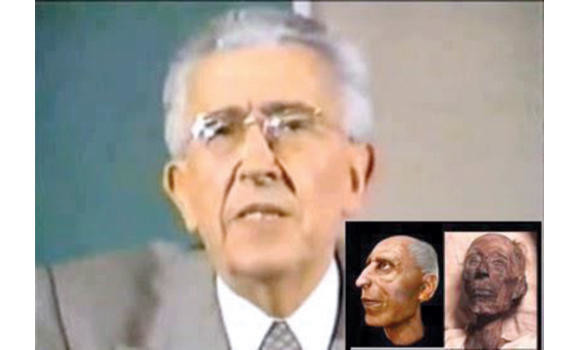
- While analyzing the mummy, he discovered that the Quran accurately described the pharaoh’s drowning and the preservation of his body 1.
- His conversion highlights how scientific inquiry intersects with faith.
- Maurice Bucaille, a renowned French surgeon and scientist, converted to Islam after studying the mummy of Egypt’s pharaoh.
- Post-9/11 Curiosity:
- After the 9/11 attacks, curiosity about Islam increased globally.
- Many people sought to understand religion beyond media portrayals.
- Hispanics and African-Americans, who were already converting before 9/11, remain common ethnic groups among converts 2.
- Individual Stories:
- Each American who converted to Islam since 9/11 has a unique story.
- Some faced acceptance, while others encountered rejection or suspicion.
- The desire to learn and explore played a significant role 3.
In summary, the convergence of scientific inquiry, curiosity, and personal experiences contributes to the growing number of conversions to Islam. 123
Conversions with any Religion can be influenced by a Variety of Factors, including:
- Personal Experiences:
- Profound personal experiences, spiritual awakenings, or moments of clarity can lead individuals to explore faith.
- These experiences often prompt deeper questions about purpose, existence, and the divine.
- Intellectual Curiosity:
- Some people are drawn to religious texts due to intellectual curiosity.
- They explore philosophical, theological, or scientific aspects, seeking answers and understanding.
- Social and Cultural Context:
- Family, friends, and community play a significant role.
- Exposure to a particular faith through social circles or cultural events can lead to conversions.
- Seeking Meaning and Belonging:
- Life transitions, challenges, or feelings of emptiness drive individuals to seek meaning.
- Religion provides a sense of purpose, community, and belonging.
- Study and Reflection:
- In-depth study of religious texts, historical context, and teachings can lead to conviction.
- Scholars, books, and online resources contribute to informed decisions.
- Global Events and Perception:
- Major world events, conflicts, or media portrayals of a religion impact perceptions.
- Positive or negative associations influence conversions.
Remember, each person’s journey is unique and shaped by a combination of these factors.
Quranic Verses that Offer Guidance and Inspire Seekers of Truth:
- Surah Al-Baqarah (2:286):
- “Allah does not burden a soul beyond that it can bear…”
- This verse reminds us that even in adversity, Allah does not burden us beyond our capacity. Patience and trust in Allah’s wisdom help us overcome challenges 1.
- Surah Ash-Sharh (94:5-6):
- “For indeed, with hardship [will be] ease. Indeed, with hardship [will be] ease.”
- This powerful reminder assures us that after every difficulty, relief follows. It instils hope during tough times 1.
- Surah At-Tawbah (9:51):
- “Say, ‘Never will we be struck except by what Allah has decreed for us; He is our protector.’ And upon Allah let the believers rely.”
- Trusting Allah during adversity brings comfort and strength 1.
- Surah Al-Ankabut (29:69):
- “And those who strive for Us – We will surely guide them to Our ways…”
- Perseverance leads to divine guidance. Allah is with those who do good 1.
- Ayat al-Kursi (Surah Al-Baqarah, 2:255):
- “Allah! There is no deity except Him, the Ever-Living, the Sustainer of existence…”
- Ayat al-Kursi highlights Allah’s supremacy, especially during challenging times 1.
- Surah Al-Isra (17:109):
- “And they do not call upon Allah, while they have felt His existence, the Exalted in Might, the Wise.”
- This verse emphasises turning to Allah in prayer during difficult moments 2.
Remember, seeking truth and guidance is a journey, and these verses provide solace along the way. 12
If you enjoyed this article, please like and share it with your friends, and don’t forget to subscribe for more great content!
